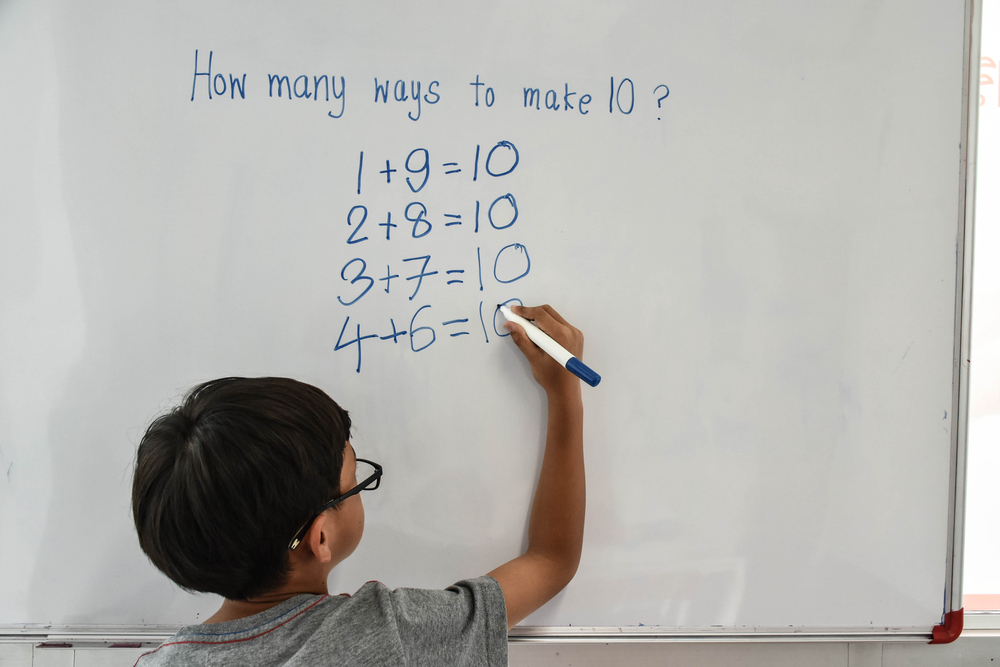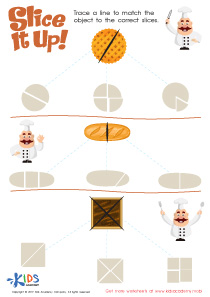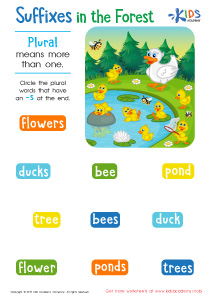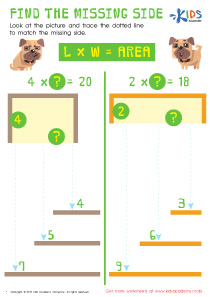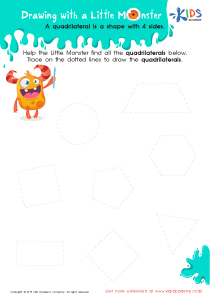Understanding fractions Easy Fractions of Shapes Worksheets for Ages 3-6
5 filtered results
-
From - To
Discover the joy of learning with our “Understanding Fractions: Easy Fractions of Shapes Worksheets” designed for children ages 3-6! These engaging worksheets introduce young learners to the concept of fractions in a fun and approachable way. Through colorful visuals and interactive activities, children will explore various shapes and learn to identify and represent fractions, enhancing their mathematical skills. Tailored to suit early learners, these worksheets promote critical thinking and problem-solving while fostering a love for mathematics. Perfect for both classroom and home use, our resources provide essential support for developing foundational math skills. Get started on a rewarding learning journey today!
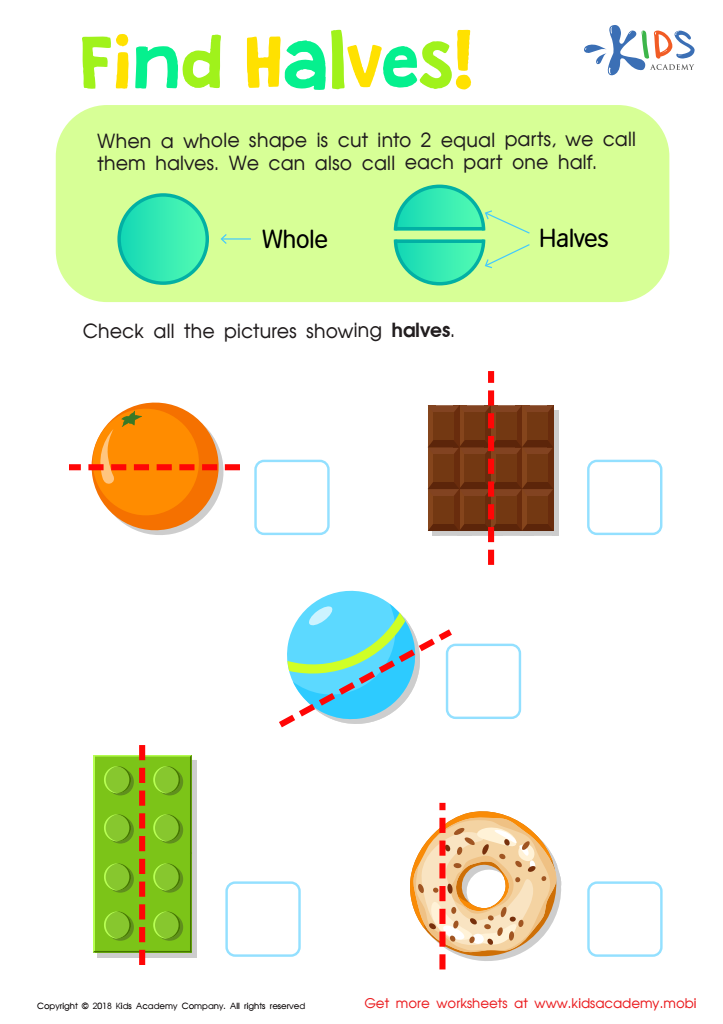

Find Halves Worksheet
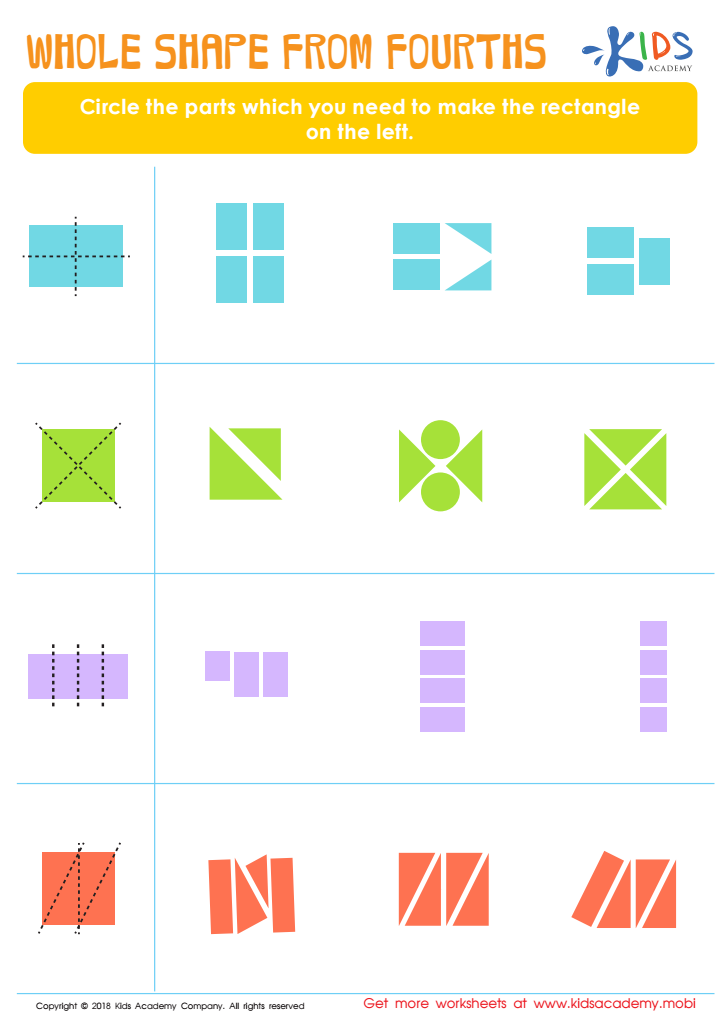

Whole Shape from Fourths Worksheet
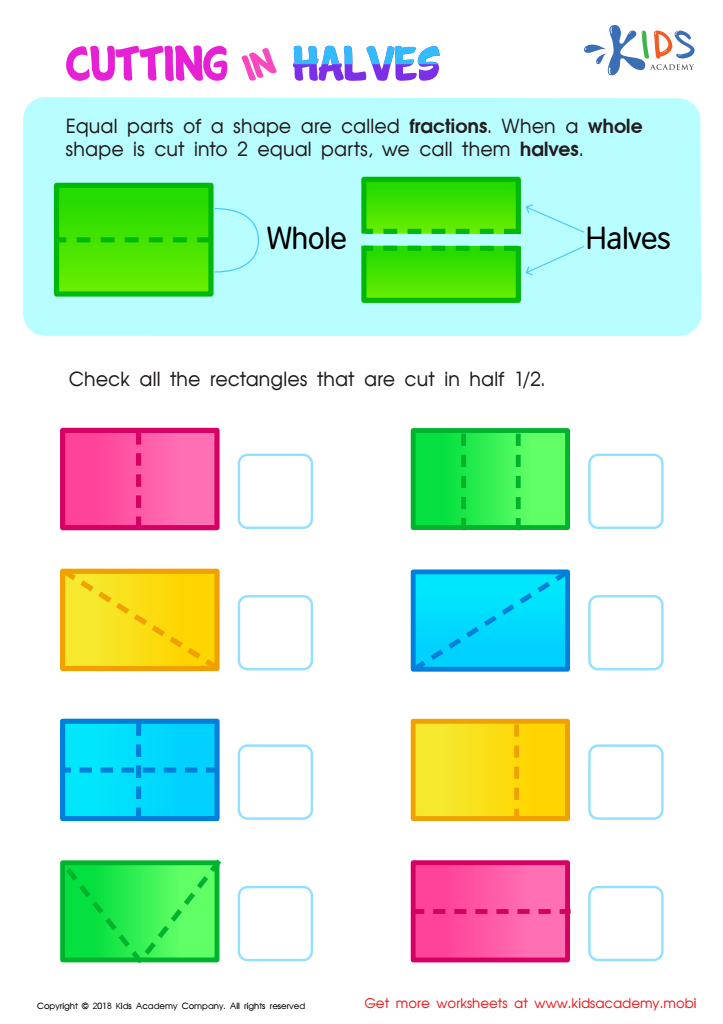

Cutting in Halves Worksheet
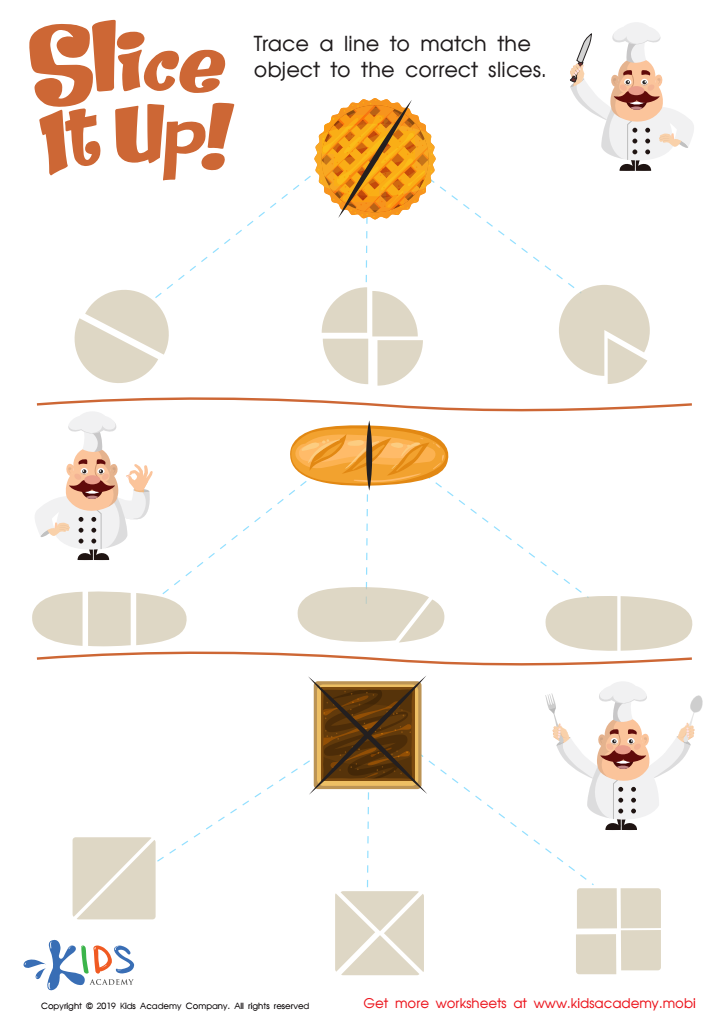

Slice It Up Worksheet
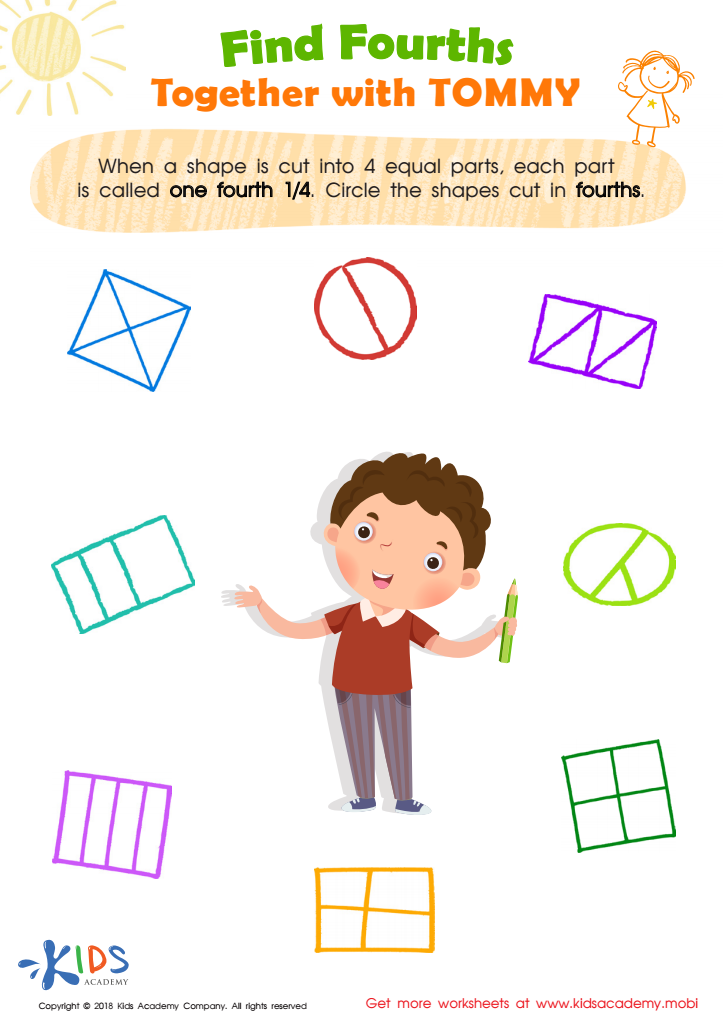

Find Fourths Together with Tommy Worksheet
Understanding fractions, particularly through easy shapes, is crucial for young learners aged 3-6 for several reasons. Firstly, early exposure to fractions helps develop foundational mathematical concepts. By recognizing and manipulating parts of shapes, children build essential skills in comparison, division, and problem-solving. These abilities lay the groundwork for more advanced math in later years.
Moreover, teaching fractions through shapes makes learning engaging and accessible. Young children are naturally drawn to visual and hands-on activities. Using familiar objects—like slices of pizza or segments of fruit—allows them to grasp abstract concepts in a tangible way, deepening their comprehension and retention. This interactive learning also encourages curiosity and exploration, fostering a positive attitude towards mathematics.
Additionally, understanding fractions supports cognitive development by enhancing spatial awareness and critical thinking. As children play with shapes and fractions, they're honing essential skills such as categorization and comparison. Lastly, discussions about sharing and fair division in everyday contexts offer a moral dimension, teaching cooperation and fairness.
In essence, emphasizing simple fractions through shapes not only nurtures mathematical understanding in early learners but also cultivates life skills essential for their overall development. Parents and teachers play a vital role in facilitating this enriching learning experience.
 Assign to My Students
Assign to My Students





